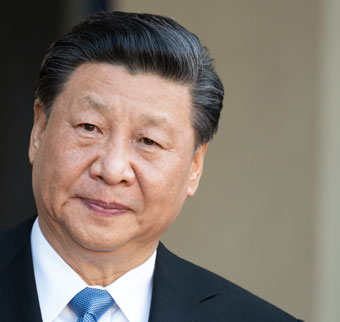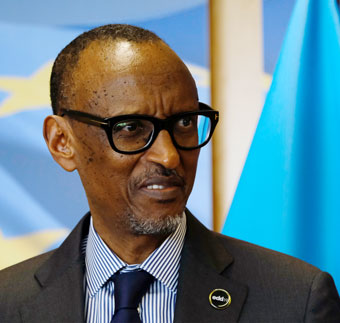The world is experiencing a new form of autocracy
Today’s authoritarians use legal measures to subvert constitutional constraints
Read the full story at The Atlantic
In March 2018, Donald Trump, addressing a crowd of donors at his Florida estate, told what sounded like a joke. He was talking about the recent amendment of China’s constitution to remove presidential term limits, allowing Xi Jinping to serve in that office indefinitely. About Xi, Trump said: “He’s now president for life, president for life. And he’s great. And look, he was able to do that. I think it’s great. Maybe we’ll have to give it a shot someday.” The crowd cheered and applauded in response. In fact, Trump has told one version or another of this joke many times since becoming president.

And though Trump’s remarks are generally perceived as facetious, many of his counterparts on the world stage are quite serious. In January, Vladimir Putin addressed the Russian nation in an annual State of the Union–esque speech. Alongside pledges to improve living standards by, among other things, offering free hot meals to schoolchildren, he proposed major constitutional reforms that could see the presidential office weakened and the prime ministry and State Council strengthened—measures very likely aimed at ensuring that Putin can remain in power after 2024, when constitutional term limits will force him out of the presidency.
About one-third of all presidents who reached the end of their term made a serious attempt to overstay. Two-thirds of those who made the attempt succeeded.
This is how authoritarianism looks today. Our original study documents all term-limit-evasion strategies worldwide since the year 2000. We found that presidential-term-limit evasion is exceedingly common: About one-third of all presidents who reached the end of their term made a serious attempt to overstay. Two-thirds of those who made the attempt succeeded.

What’s particularly interesting is not only that so many presidents try to evade term limits, but that they are more and more sophisticated and legalistic in how they do so. Whereas leaders once used unmistakably authoritarian actions to stay in power, such as banning opposition parties or dismissing the legislature, today’s heads of state instead use democratic institutions and legal measures to subvert constitutional constraints on their power. More specifically, we found that there are four basic strategies for evading term limits, none of which violates a constitution outright: adding constitutional amendments, rewriting the constitution, using the courts to reinterpret the constitution, and appointing a placeholder president.
The amendment allows Kagame—and only Kagame—an additional seven-year term.

The first and most common strategy—used in some 66 percent of the attempts in our data—is simply to amend the constitution to extend or remove term limits. This is the path Xi took when, with hardly a whisper of dissent, he removed any limit on the number of five-year terms he could serve. Often, such changes are breathtaking in their sophistication. In Rwanda, for instance, Paul Kagame presided over a constitutional-amendment process that will allow him to serve for a total of 35 years (or longer, if further amendments are in the offing). The effort began in 2015, when Kagame’s party encouraged voters to sign petitions urging Parliament to give the president an additional term. The party—the Rwandan Patriotic Front—withheld its formal endorsement for these efforts until a critical mass of signatures was reached. Once this happened, Parliament passed an amendment unanimously, and then a reported 98.9 percent of voters in a popular referendum ensured that the amendment would take effect. Throughout, Kagame himself never made public whether he intended to remain in office or otherwise commented on the amendment process, and he announced his intention to seek another term only after the measure had passed. The amendment allows Kagame—and only Kagame—an additional seven-year term, after which a new limit of two five-year terms (passed as part of the amendment package) will apply to him on a prospective basis. Thus, he may remain in office until 2034 while preserving an aura of democratic legitimacy and guaranteeing, at least on paper, that his successor will be limited to a maximum of 10 years.
A second strategy, which constitutes about 8 percent of evasion attempts, is what we call the “blank slate” strategy: when a leader creates an entirely new constitution, essentially nullifying the old term limits. When a new constitution is created, the leader’s term is effectively restarted, without any apparent constitutional violation. This was one of the methods employed by former Sudanese President Omar al-Bashir until his ouster last year: After taking power in 1989, he oversaw not one but two entirely new constitutions, and thus remained in power for decades without formally violating term limits; each time there was a new constitution, his term started all over again.


